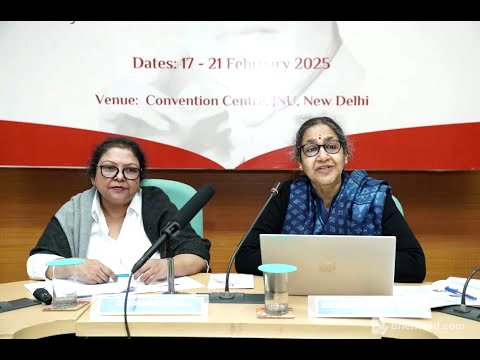TLDR;
This video features a discussion with Thomas Franco, former general secretary of the All India Bank Officers Confederation, regarding the impact of RBI guidelines on ATM transactions and various banking charges affecting the general public. The discussion highlights the increasing charges levied by banks, the disproportionate benefits given to corporate borrowers, and the overall effect on the common person and the banking system.
- ATM transaction charges and their impact on the public.
- Minimum average balance charges and other service fees.
- Disproportionate lending practices favouring corporate borrowers over small depositors and enterprises.
- The need for the RBI to re-evaluate policies to support the majority and reverse the trend of benefiting a small minority.
Introduction [0:00]
The News Minute introduces a discussion with Thomas Franco about the impact of RBI guidelines on ATM transactions and banking charges. The channel emphasises its independence from government and corporate ads, relying on viewer subscriptions for support.
ATM Transaction Charges and Their Impact [0:55]
Initially, ATMs were presented as a free service, but now banks impose charges on transactions. Customers are allowed five free transactions per month at their own bank's ATM and three to five at other banks' ATMs, depending on the location. Both financial (cash withdrawal) and non-financial (balance enquiry) transactions count towards this limit. Checking your balance at the ATM, even after a withdrawal, counts as a separate transaction. Exceeding the limit incurs a charge of ₹23 plus 18% GST. These charges may seem small, but they discourage people, especially in rural areas, from using ATMs for small withdrawals, pushing them to keep more cash at home, which poses a security risk. Additionally, increased ATM charges may drive more customers to bank branches, which are already understaffed due to the promotion of digital services.
Additional Banking Charges [7:01]
In 2023, banks collected ₹8,000 crores from ATM transaction charges alone. Banks also levy charges for not maintaining a minimum average balance, collecting ₹21,000 crores in 2023. Although State Bank of India withdrew these charges in 2020, other banks continue to impose them. These charges disproportionately affect lower and middle-class individuals, who are essentially the owners of the bank through their deposits. Banks offer low interest rates on savings accounts (2-2.5%) but impose various charges, such as transaction fees and checkbook fees, creating an unjust system.
Impact on Depositors and Banking System [9:42]
Small household deposits constitute 83% of total deposits. Charging high fees may cause people to withdraw their money and keep it elsewhere, impacting the banking system. The faith in the banking system has declined since demonetisation, and increasing charges will exacerbate this issue. Other charges, such as safe custody fees and increased transaction fees at business correspondent points, further burden the common person.
Disparities in Lending Practices [12:00]
Wealthy individuals benefit from lower transaction charges through RTGS and NEFT, while small depositors face higher charges. Corporate borrowers with loans above ₹100 crores receive interest rates as low as 4%, while education and micro-enterprise loans attract rates of 11-13%. These practices benefit a small percentage of corporate entities at the expense of the majority. Many of these corporate loans are written off through the National Company Law Tribunal (NCLT), further highlighting the disparity. For example, Anil Ambani's company had a ₹46,000 crore outstanding, which was taken over by Mukesh Ambani for just ₹450 crores.
Effects on the Common Person and the Economy [15:28]
Savings and current account deposits form a significant portion of bank funds (40-45%). Current accounts do not earn any interest, while savings accounts offer minimal interest calculated on the minimum balance between the last 10 working days. This system disadvantages depositors. The lack of affordable credit for small borrowers affects the economy, as they are more likely to spend the money immediately, creating a multiplier effect. People may turn to alternative investment options, which could harm the banking system.
Non-Banking Financial Companies (NBFCs) [17:37]
Small borrowers are increasingly turning to NBFCs due to reduced bank staff and a focus on larger borrowers. The RBI has removed the interest ceiling for NBFCs, leading to some borrowers paying exorbitant interest rates (50-60%). The RBI is indirectly funding NBFCs, which contradicts the principle of not lending for the purpose of relending.
Recommendations and Policy Changes [18:51]
The RBI needs to encourage small depositors with higher interest rates and waive service charges for them. While promoting digital transactions like UPI, new charges are being introduced, similar to practices in other countries. The banking system favours the wealthy 10% while burdening the remaining 90%. The RBI is no longer independent and is influenced by the government. Policies such as encouraging corporate credit and the ineffectiveness of the insolvency and bankruptcy code exacerbate the issue. The RBI should prioritise education loans at concessional rates and monitor the implementation of the 1% credit allocation to weaker sections at 4% interest.
Conclusion [23:53]
Government policies need to shift from supporting a small minority to supporting the majority to achieve constitutional goals and prosperity. The policies must be reversed to support the majority instead of a minuscule minority.









